Novonesis Lets Nature Guide Sustainability Plans
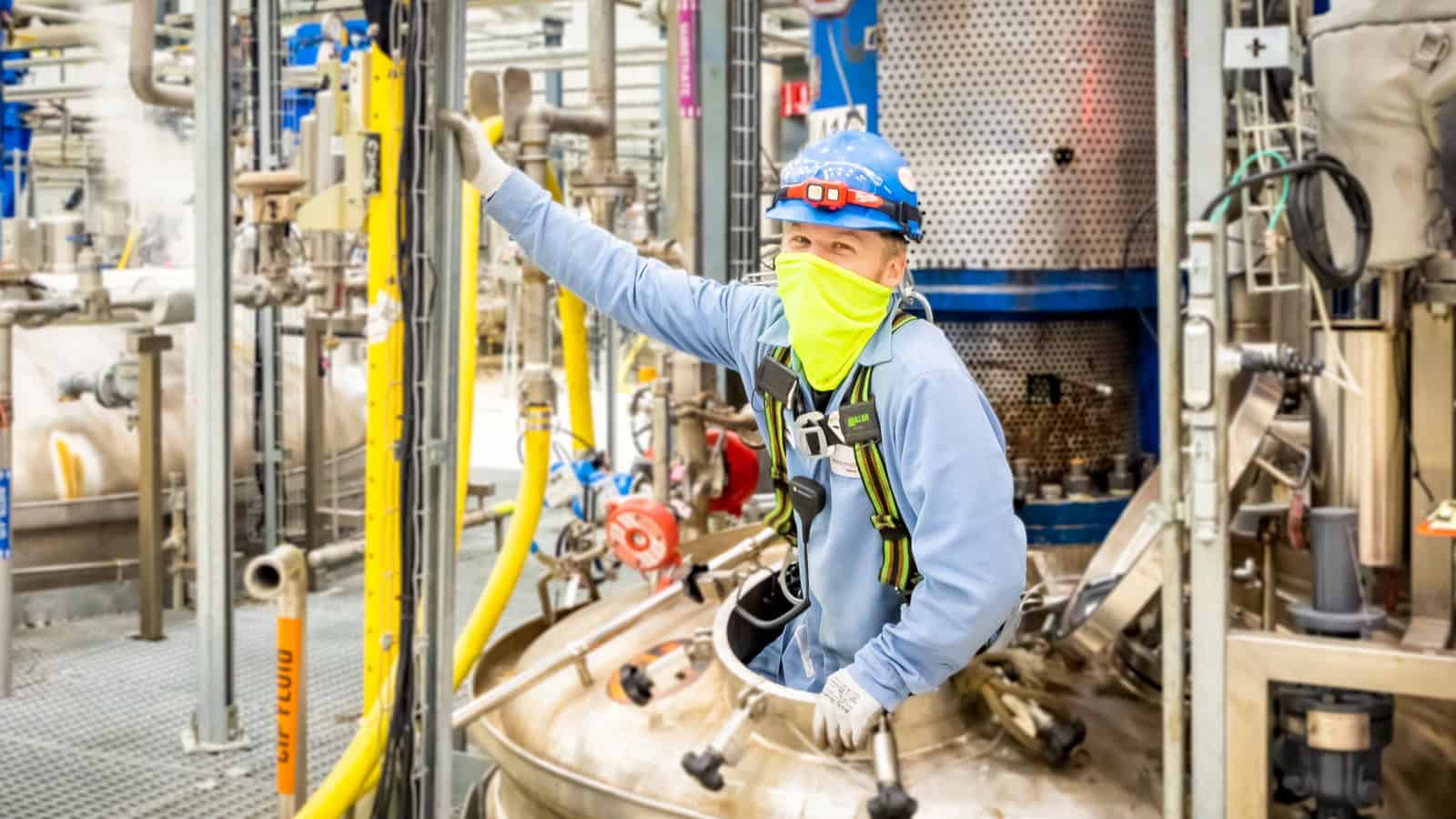
When it comes to good environmental stewardship, Novonesis takes its cue from the natural world itself.
“We are inherently sustainable because we draw from nature,” said Novonesis Senior Vice President of Planetary Health Biosolutions Rene Garza. “As biology matures, we find that nature has evolved to be an efficient utilizer of every single resource out there.”
Back to basics: It’s the perfect model for the newly formed Lyngby, Denmark–headquartered biosolutions firm, the product of a January merger between two Danish legacy companies: enzyme and microbial technology firm Novozymes and bioscience supplier Chr. Hansen.
- The portfolio of Novonesis—which is a combination of the Greek words for “new” and “beginning”—includes enzymes, microbes, novel vitamins and other naturally derived offerings.
- The business has customers across more than 30 industries: food and beverages, animal health and nutrition, energy, fine chemicals, dietary supplements, household care, plastics, plant health and more.
An early adopter: Legacy firm Novozymes set its sights on sustainable business practices more than two decades ago. In 2002, it became the first company in the world to publish a triple bottom-line integrated report.
- “We recognized early on that resources are finite, and the need to do more with less is part of ensuring a better quality of life,” Garza said of the company’s decision to undertake the annual report, a method of stocktaking on sustainability activities using three “bottom lines”: profit, people and planet. “We realized we’re not just here to generate money, but also to create an impact on society and our environment.”
Big goals: That’s why Novonesis has set lofty aims for itself (and is meeting them).
- Firmwide targets include carbon net neutrality by 2050, as well as a 75% reduction in emissions from its own operations and a 35% reduction in emissions from its supply chain by 2030.
- How is it doing all this? Innovation and persistence, according to Garza. “We want to improve our efficiency by as much as we can, and we do this by making improvement to our hardware—pump replacements, reengineering [of] our microorganisms. We also source renewable energy.”
- In fact, Novonesis is on track to source 100% of its energy from renewables by next year. Between 2018 and 2022, it reduced absolute emissions by 63% while increasing revenue.
Water, too: Novonesis knows how important water use is in the overall sustainability picture.
- The company is piloting a reverse-osmosis filtration system at its North America headquarters in Franklinton, North Carolina, that lets it recycle and reuse water. The program, scheduled for full operationality by next year, is going so well there are plans to replicate it at other Novonesis facilities worldwide.
- And at the company headquarters in Denmark, “we have been able to recycle 58 million tons [of water]—the equivalent of 23 Olympic-size swimming pools,” Garza reported.
What government can do: Novonesis and other manufacturers are making great strides in sustainability, but having the right policies in place at the federal level would make it easier for them to do more with less, Garza continued.
- “We need regulatory reform,” he told the NAM. “Federal regulations, if done well, really can drive innovation, particularly in biotechnology. … The government should [also] invest in pilot and demo scale fermentation capacity to allow startups to scale up.”
- The U.S. has the largest concentration of startup companies in the world, he went on, but there is now a “valley of death” between discovery and commercialization of innovations in biology, which federal funding could help remove.
- Finally, manufacturing in the U.S. needs the reinstatement of pro-growth policies from the 2017 Tax Cuts and Jobs Act, including 100% expensing for research and development costs and accelerated depreciation for capital investments.
Stakeholder education: Getting more people aboard the sustainability train is doable—but it will require continued education campaigns.
- “We need long-term thinking [and] to encourage stakeholders to prioritize the long-term over short-term gains,” Garza said. “Sustainability is about balancing immediate and future needs.”
Manufacturers Participate in Small Business Week Capitol Hill Showcase
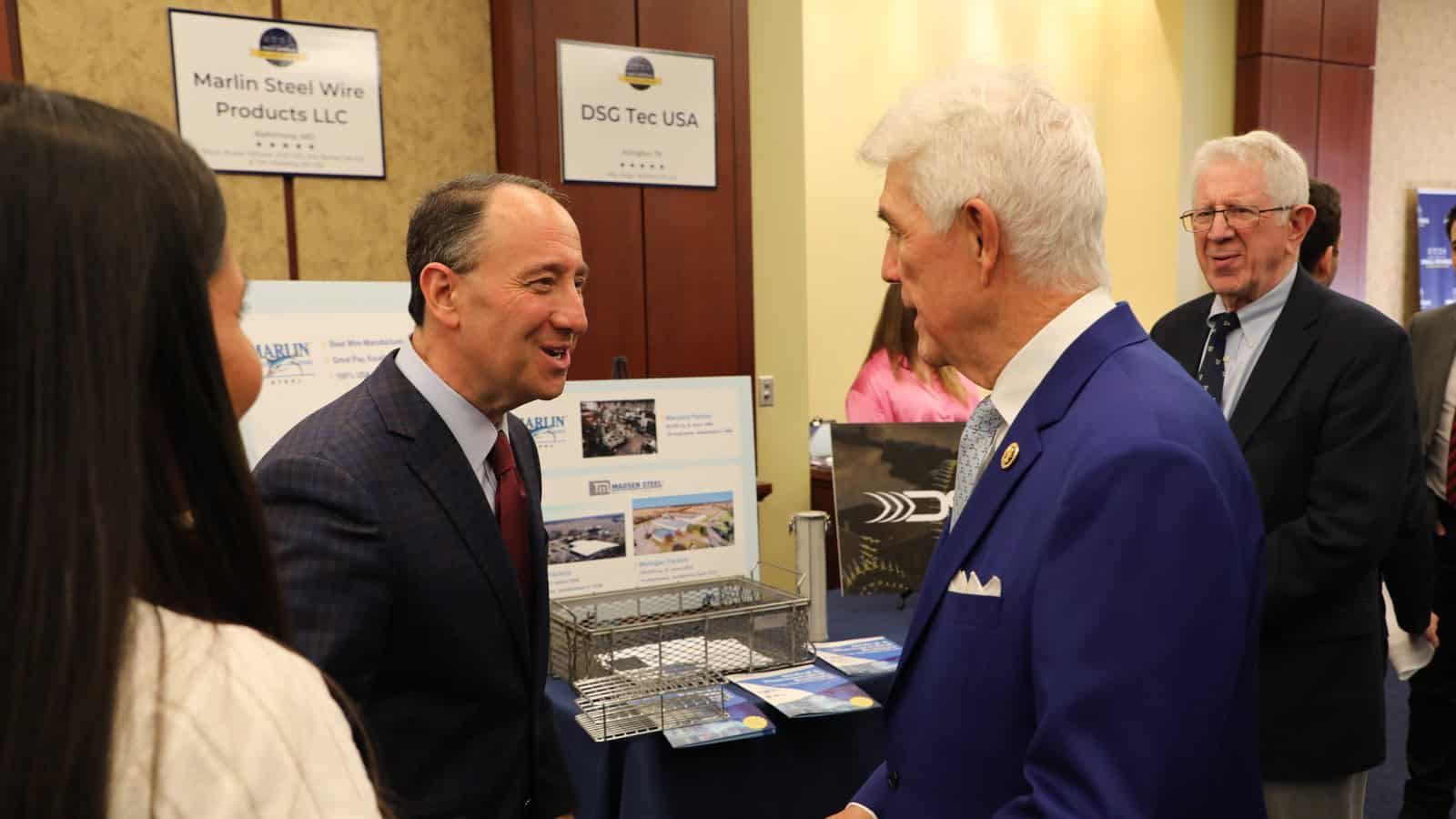
Manufacturers were among the select businesses invited to participate in last Wednesday’s Small Business Week showcase on Capitol Hill, and two in particular—Marlin Steel in Baltimore and its affiliated entity, Madsen Steel Wire Products, in Michigan and Indiana—made use of the time with lawmakers to advocate for some manufacturing-critical priorities.
What’s going on: Republicans on the House Small Business Committee hosted the event to shine a spotlight on the work of job creators throughout the country and draw attention to the federal government’s costly regulatory onslaught (Washington Examiner).
- Marlin Steel and Madsen Steel President and Owner and NAM board member Drew Greenblatt manned a booth with his family at the showcase displaying several products—such as metal baskets and racks—manufactured at his family-owned custom wire and steel products businesses.
- Greenblatt and others invited to the event had the opportunity to meet and speak with House Republican leaders, including Speaker Mike Johnson (R-LA), Majority Whip Tom Emmer (R-MN), Small Business Committee Chairman Roger Williams (R-TX) and Rep. Tim Walberg (R-MI).
The background: Marlin Steel, Madsen Steel and many other manufacturers thrived under a pro-growth tax provision in the Tax Cuts and Jobs Act of 2017 that allowed businesses to deduct 100% of their R&D costs in the year the costs were incurred.
- But in 2022 and 2023, that policy and two others—enhanced interest deductibility and 100% accelerated depreciation—expired.
- Ever since, manufacturers’ tax bills have increased, as companies, including Marlin Steel, have been required to amortize their R&D costs over five years, making innovation-crucial investments much more costly.
- “We want to grow jobs in our Indiana and Michigan factories, but we also need to give our talent the extraordinary tools needed to compete with China,” Greenblatt said. “We need immediate expensing to cover these huge investments. We put in $5 million but now have to pause investment. We need Congress and the president to act to allow us to hire more factory workers faster.”
Why it’s important: The showcase gave Greenblatt an opportunity to hammer home to lawmakers the importance to manufacturing of reinstating the expired tax provisions—and the need to act quickly to ensure that an additional suite of pro-growth tax measures, set to expire at the end of 2025, is extended.
- Another issue top of mind for Greenblatt and manufacturers everywhere is the flurry of regulations being handed down by federal agencies.
- In 2022, the cost of federal regulations to manufacturers was approximately $350 billion, a 35% increase from a decade earlier, according to an NAM study.
- Small manufacturers spend more than $50,000 per employee per year to comply with federal regulations.
Stop the struggle: “As a small business owner myself, I know all too well the many struggles small businesses face when trying to compete in the marketplace,” Chairman Williams said. “It is my hope that this … showcase serve[s] as an opportunity for more to learn about how invaluable Main Street is to our economy and our country.”
Related: Last week, the NAM unveiled videos on social media from other leading small and medium-sized manufacturers, adding their voices to key competitiveness priorities, featuring NAM board members Patricia Miller, CEO and founder of M4 Factory, Charles Sukup, chairman and treasurer, Sukup Manufacturing Co., and Nicole Wolter, president and CEO, HM Manufacturing.
NAM Publishes First-of-Its-Kind Report on Vast Potential of Artificial Intelligence for Manufacturers
Washington, D.C. – The National Association of Manufacturers released a first-of-its-kind report, “Working Smarter: How Manufacturers Are Using Artificial Intelligence,” detailing use cases for artificial intelligence in manufacturing and case studies of how manufacturers are already implementing AI technologies to strengthen America’s workforce, advance innovation and improve the quality of life for everyone.
The report provides an overview of insights from leading manufacturers, including Johnson & Johnson, Schneider Electric and Hitachi, on how AI can improve efficiency, product development, safety, predictive maintenance and supply chain logistics. The report also outlines a series of recommendations on how policymakers can help support the safe, responsible development of AI while promoting innovation and growth.
“So much of the media and policymaking conversation is focused on generative AI, but AI is far more than that for modern manufacturers,” said NAM President and CEO Jay Timmons. “It’s infused increasingly throughout the shop floor, research and development and beyond. Manufacturers are leading the way in the use and development of new AI technologies. From developing more effective clinical trials and improving workplace safety to strengthening supply chain resiliency and supporting workforce training for employees, AI is unlocking new opportunities to strengthen our modern manufacturing workforce and improve the lives of all Americans. Congress and the Biden administration can support manufacturers’ adoption of AI by enacting strong data privacy protections, investing in workforce training and providing regulatory certainty.”
“All possible futures for modern manufacturing in the U.S. involve AI,” said Johnson & Johnson Executive Vice President and Chief Technical Operations & Risk Officer and NAM Board Chair Kathy Wengel. “Given the importance of this generational technology, policymakers must develop sensible, carefully thought-out frameworks for various AI applications—and they should lean on manufacturers’ years of experience to engineer those frameworks. We need a policy environment that supports innovation and growth in manufacturing AI, because it will bolster U.S. competitiveness and leadership in this critical emerging field.”
Policy recommendations include the following:
- Invest in R&D and career technical education institutions that train the modern manufacturing workforce.
- Enact federal privacy legislation that advances individuals’ privacy and provides legal clarity that supports continued innovation and competitiveness.
- Employ a risk-based approach that tailors any new AI regulations—only if new regulations are necessary—to specific use cases and minimizes compliance burdens.
- Ensure that regulatory frameworks are aligned globally to maintain U.S. global leadership. The more disparate the approach to AI around the world, the more time, energy and investment companies will need to spend navigating misalignments.
Learn more here.
-NAM-
The National Association of Manufacturers is the largest manufacturing association in the United States, representing small and large manufacturers in every industrial sector and in all 50 states. Manufacturing employs nearly 13 million men and women, contributes $2.89 trillion to the U.S. economy annually and accounts for 53% of private-sector research and development. The NAM is the powerful voice of the manufacturing community and the leading advocate for a policy agenda that helps manufacturers compete in the global economy and create jobs across the United States. For more information about the NAM or to follow us on Twitter and Facebook, please visit www.nam.org.
Manufacturing Employment Stays the Same
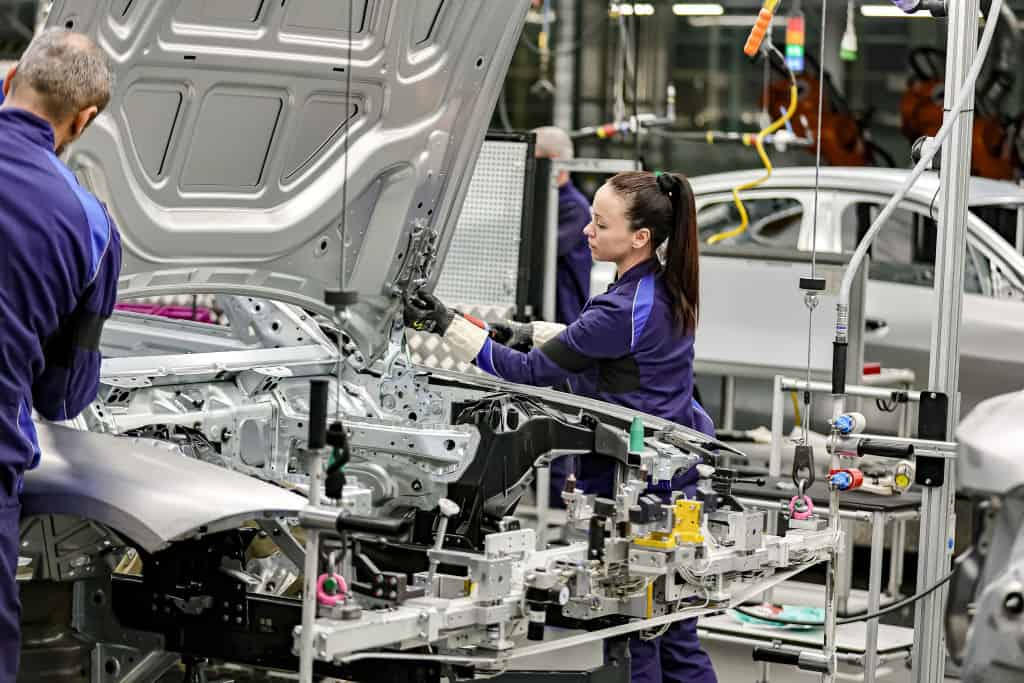
Employment in manufacturing remained essentially the same in April as it was in March, according to data out today from the U.S. Bureau of Labor Statistics.
- Overall employment increased by 175,000.
What’s going on: Manufacturing employed a seasonally adjusted 12,961,000 workers in April, up just marginally from 12,953,000 in March and 12,957,000 in February.
- The number of people employed in manufacturing was also up only slightly from April 2023, when it was a seasonally adjusted 12,941,000.
Durable goods vs. nondurable: There were a seasonally adjusted 8,144,000 workers in durable goods manufacturing in April, flat from March’s number.
- Nondurable goods had a seasonally adjusted 4,817,000 employees, also essentially unchanged from the prior month.
Workweek: The average workweek in the manufacturing industry was unchanged from March, at 40.0 hours.
- In the larger economy, the workweek for all nonfarm employees inched down by 0.1 hour in April, to 34.3 hours.
Earnings: Average earnings in manufacturing were also little changed from March to April, coming in at $33.61 an hour in the latest reading, down only slightly from $33.65, but up from February’s $33.44.
FAA Authorization Moves Forward
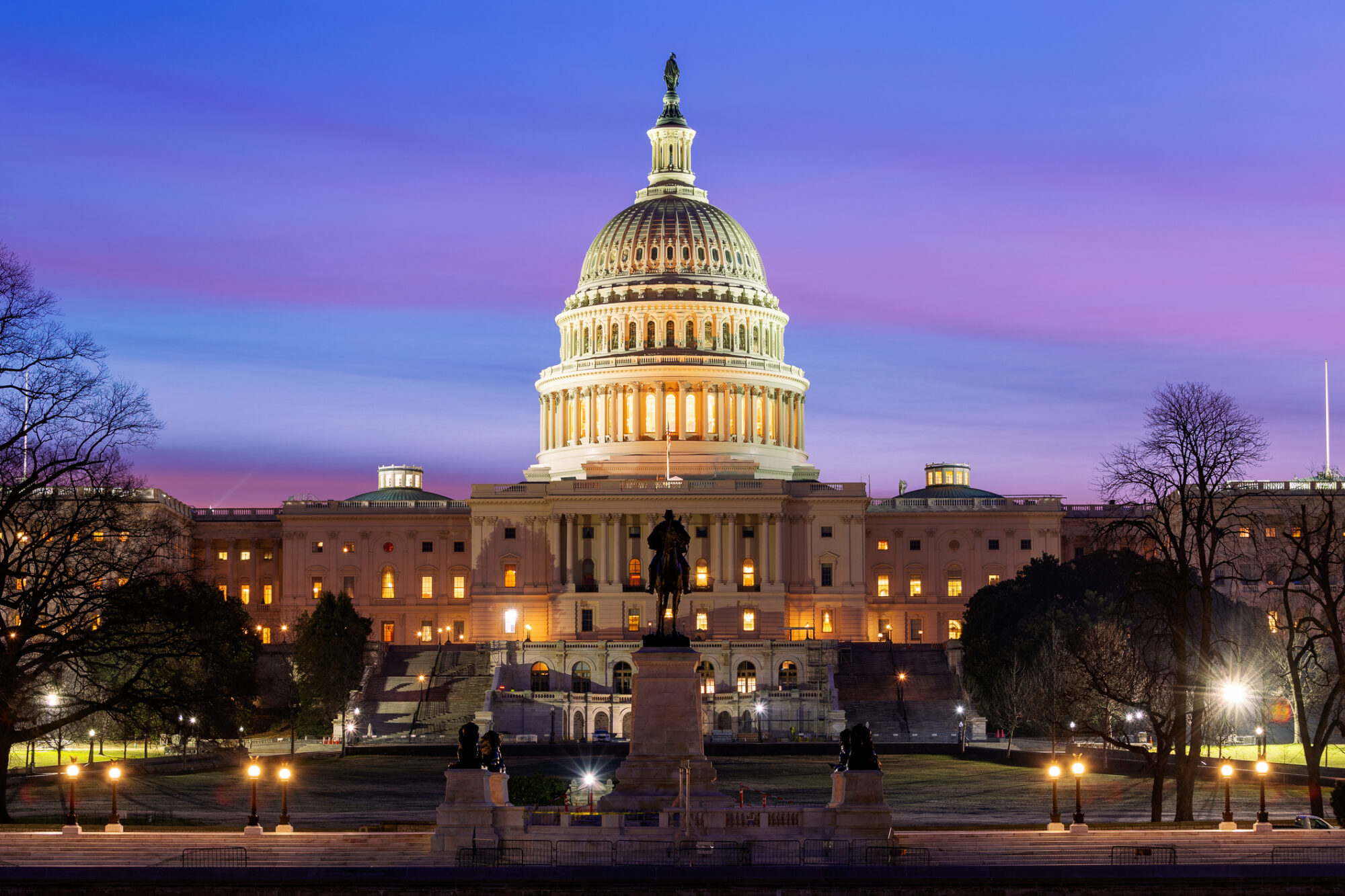
In a bipartisan vote Wednesday, the Senate moved to advance Federal Aviation Administration reauthorization—but lawmakers still face a looming deadline to pass the legislation (The Hill).
What’s going on: “Senators voted 89 to 10 to overcome the first procedural hurdle and move toward consideration of the package ahead of the May 10 deadline.”
- The draft 1,069-page bill—which already has been punted three times—sets the agency’s priorities. It would authorize billions of dollars in appropriations for the FAA, as well as hundreds of millions of dollars for the National Transportation Safety Board, from fiscal year 2024 through 2028.
- But all 100 senators must agree to fast-track the measure for it to pass before next Friday.
Why it’s important: The FAA reauthorization bill renews statutes governing the agency’s civil aviation programs, as well as revenue collection authority. From air traffic operations to airport development, these functions are critical to the U.S. economy and the ability of Americans to travel.
However . . . Both Democrats and Republicans want amendment votes on the measure, and “lawmakers acknowledge it could be a bumpy ride” to passage.
A hot-button issue: One sticky wicket amendment that’s likely to get a vote would remove language in the bill that adds 10 flights at Ronald Reagan Washington National Airport.
- Senators from the Washington, D.C., area say the airport cannot handle any more traffic. Virginia and Maryland are home to Dulles International Airport and Baltimore Washington International Airport, respectively.
NAM and Allies: PM2.5 Standard Will Hurt Manufacturers, Economy
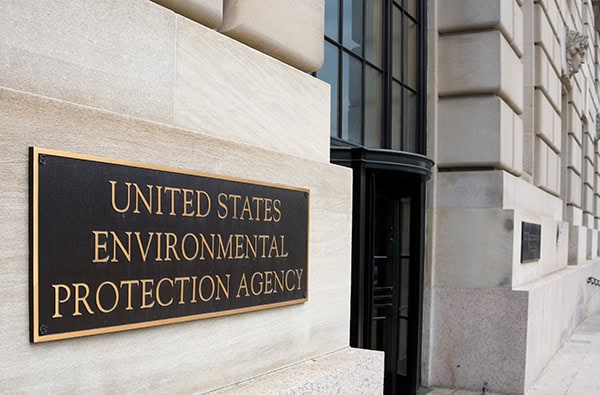
The EPA’s overly stringent final rule on particulate matter puts continued U.S. innovation and economic growth in jeopardy, the NAM and allied groups told congressional leaders Monday.
What’s going on: In March, the EPA lowered the standard for particulate matter, or PM2.5, in its National Ambient Air Quality Standards rule by 25%, down from 12 micrograms per cubic meter of air to nine.
- This week, the NAM, along with 58 allied organizations, urged key House and Senate members to act soon to “stop this harmful rule before it takes effect.”
Why it’s important: The probable negative effects of allowing the change include “making it more difficult to create jobs, build cutting-edge factories and lead the world in the development of products that will shape modern life in the decades ahead,” the groups said.
- Compliance costs could exceed $1.8 billion, according to the agency’s own estimates.
- The lowered limit also puts the U.S. at a great disadvantage to global competitors, which “have adopted standards that are less stringent than the EPA rule and are phased in over a much longer time frame.”
What needs to happen: Congress should pass a resolution of disapproval regarding the new standard immediately.
Manufacturing Job Openings Decline
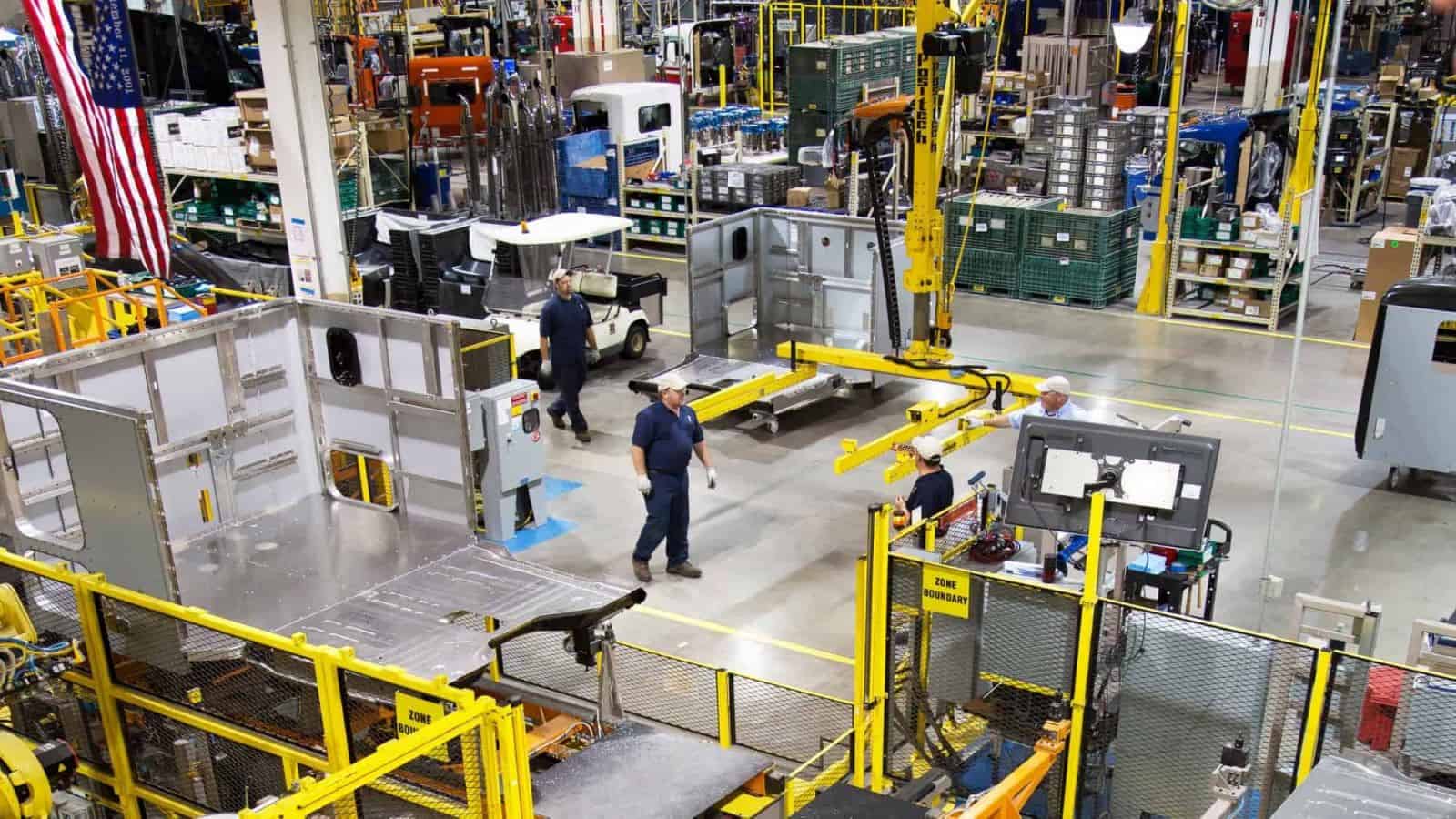
The number of U.S. job openings in manufacturing decreased in March, according to new data from the U.S. Bureau of Labor Statistics.
- Meanwhile, the number of job openings in the larger economy remained about the same, at approximately 8.5 million.
What’s going on: There were 570,000 open positions in the U.S. manufacturing industry in March, down from an adjusted 587,000 in February.
- Open positions in durable goods manufacturing also declined, to 353,000 in March from an adjusted 379,000 in February.
- Openings in nondurable goods, however, inched up to 217,000 from an adjusted 208,000.
Hires and quits: Hiring in the sector remained about the same as the last reading, coming in at 323,000 in March (down marginally from February’s 324,000).
- Total separations—which include quits, layoffs, discharges and other severance of employment—decreased slightly in March (to 330,000) from February (an adjusted 338,000).
NAM Stands Up for Biopharmaceutical Innovation Before Senate Hearing

In advance of a Senate hearing on health care costs, the NAM is ensuring that senators understand the importance of biopharmaceutical innovation to patients and the U.S. economy—and the damaging impact of policies that hinder drug development.
What’s happening: The Senate Armed Services Committee will hold a subcommittee hearing today on whether harmful policies like price controls, compulsory licensing and weaker intellectual property protections for new medicines could reduce servicemembers’ health care costs.
NAM pushes back: The NAM is highlighting the extraordinary investment—in both time and capital—that it takes to bring a lifesaving treatment to market. According to the NAM:
- The average cost of developing a new drug was $2.3 billion as of 2022;
- Across the industry, biopharmaceutical manufacturers spent $139 billion on R&D in just 2022 alone;
- It can take 10 to 15 years for a breakthrough scientific discovery to move through early-stage research, clinical trials, Food and Drug Administration approval and manufacturing; and
- Only 12% of investigational drugs that enter a Phase I clinical trial ultimately receive FDA approval—to say nothing of the hundreds of discoveries that never make it into clinical trials.
Lifesaving impact: In 2023, the FDA approved a record-breaking 71 new medicines that will improve the lives of patients.
- The biopharmaceutical industry behind these breakthroughs is also stimulating the U.S. economy: Biopharmaceutical manufacturers accounted for $355 billion in value-added output to the U.S. economy in 2021 and directly employed 291,000 workers in the U.S.
Innovation under threat: In recent years, biopharmaceutical manufacturers have been subject to harmful policies that will limit innovation and slow efforts to develop lifesaving medicines.
- The Medicare Drug Price Negotiation Program subjects life-changing biopharmaceutical innovations to government price controls, while the Biden administration’s “march-in” proposal undermines innovators’ IP rights. These policies make it riskier and more costly for manufacturers to invest in groundbreaking research.
- What’s more, the prices Americans pay for medicines are influenced heavily by middlemen, such as pharmacy benefit managers rather than biopharma companies. In 2020, more than half of every dollar spent on brand medicines went to PBMs and others in the health care system—not the medicine’s manufacturer.
The final word: “The costs of manufacturing a medicine include potentially decades of research and billions of dollars of investment,” said NAM Vice President of Domestic Policy Charles Crain. “Congress must avoid adopting policies that will stymie this lifesaving innovation.”
House Committee Forms Working Groups to Revive Tax Provisions

Following a steady drumbeat of advocacy by the NAM, the House Committee on Ways and Means has formed tax working groups dedicated to finding legislative solutions to the scheduled expiration of pro-growth tax policies at the end of 2025.
What’s going on: Each of the 10 working groups will focus on an area of the economy that will be affected by the sunsetting of certain measures in the Tax Cuts and Jobs Act.
- Ways and Means Committee Vice Chairman Vern Buchanan (R-FL) was selected to lead the American Manufacturing tax working group.
- The members of Congress assigned to this team will examine the effects of pro-growth tax policies on the manufacturing sector.
Why it’s important: “Tax reform was rocket fuel for manufacturers: 2018, the first year the Tax Cuts and Jobs Act was in effect, was the best year for manufacturing job creation in the previous 21 years,” said NAM Managing Vice President of Policy Chris Netram. “But those gains are at risk as key tax provisions expire, making it more difficult for companies throughout the supply chain to hire, invest and grow. Congress must build on the promise of tax reform to ensure that manufacturing in America remains strong.”
- Earlier this month, Husco President and CEO and NAM Executive Committee member Austin Ramirez testified before the House Ways and Means Committee about the TCJA’s positive effect on manufacturing growth and the need for Congress to preserve the pro-growth business provisions of that legislation.
- Their expiration “mean[s] that pass-through businesses like Husco will have more of our income subject to a higher rate of tax,” Ramirez said. “At the same time, the pass-through deduction will expire completely, doubling down on the tax hikes that we face. … [A]llowing tax reform to sunset will undermine much of the progress we’ve made since 2017.”
What we’re doing: The NAM will be engaging with each of the tax working groups over the next several months to ensure that manufacturing-critical tax provisions are extended and reinstated.
- To get involved, reach out to NAM Senior Director of Tax Policy Alex Monié.
IRI Announces 2024’s Top Innovator Finalists

The Innovation Research Interchange has announced the finalists for this year’s IRI Innovation Excellence Awards.
What’s going on: The honors given by the IRI—the NAM’s innovation arm—pay tribute to organizations and individuals whose outstanding vision and tireless pursuit of excellence are having a positive impact on lives today and shaping the industries of tomorrow. Honorees come from companies of all sizes and industries.
The categories: Awards are given in five categories, three to companies and two to individuals. They are as follows:
- IRI Innovation Leadership Award (individual)
- IRI Promising Young Innovation Professional Award (individual)
- IRI Excellence Award for Innovation in Sustainability (company)
- IRI Excellence Award for Outstanding Innovative Culture (company)
- IRI Excellence Award for Digital and Technological Innovation (company)
Who participates: Each year, nominees comprise innovators who are leveraging technology to enhance operational performance at their companies or sustainability and fostering a collaborative workplace culture that celebrates innovation.
- High-performing leaders who drive sustainability initiatives are also recognized, and consultants and university partners working on exciting innovation projects with a company are eligible for nomination, too.
Why they’re important: In addition to building team unity and encouraging executive leadership to invest further in innovation, the awards give companies the chance to revisit the successes, challenges and lessons learned throughout their innovative projects.
- Selection as a finalist shows customers, prospects and partners that a company or individual is at the forefront of innovation.
Attend the celebration: Winners will be announced May 16 during the Innovation Celebration and Reception at the Innovators Summit in Boston. Celebration admission is included with summit registration.
About the IRI: The IRI offers insights, case studies, research, benchmarks and strategic connections—all built around a set of innovation growth drivers as determined by members annually. Learn more about the IRI here.
